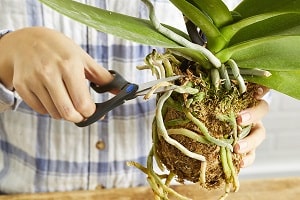Orchids are naturally tough. They grow in any tropical regions for decades and even for a century even without someone taking care of them. There are times that they get sufficient water from the rain, but during the hot summer days, they remain dry and without water. If you are growing orchids at home and you are planning to leave for a while for a vacation, you are probably thinking how long your orchids can survive without water. Here is what the experts say:
Depending on type or variety
Orchids can last long enough provided that the plant is healthy and well-moist and that the room where it is located is at average humidity level. A well-nourished orchid can last for 1 to 2 months without water. However, it depends on the type or variety of Orchids. Some varieties can last for only a month without water before they completely get dried while some can last up to 2 months or more.
Depending on the potting mix Used
Some potting mix or potting media retain more water while some dry out completely throughout the day. If the potting mix used is moss, the orchid plant can last longer without watering. If the potting mix used is bark or wood and charcoal, the water will drain easily. This also means that the plant will get dry in two or three weeks.
Depending on the humidity level
The orchid plant, however, may last for a long while as long as the humidity is at 60%. The plant and roots will get its required water and moisture from the humid environment. If you have to go and leave the plant for a while without someone to water it, you can have a humidity tray placed under its pot. It can be a tray with water and pebbles or a pail of water with stones and rocks.
Signs of Under Watered Orchid Plant:
Orchids without watering for a month or two will show signs of dehydration. The roots shrink and become dry. The leaves also shrink and turn into yellow and black color. Pleating on leaves and leaf decay will also become noticeable. The veins on the leaf are visible when the plant is dried and under watered. This is because the leaf gets thinner and thinner. The entire plant, including spikes, stems, and blooms will be stunted and limp. If you fail to water your orchid plant for a long period of time, these signs will tell you that your plant needs water immediately.
What to Do:
If you left your Orchid plants for weeks or more than a month without water, expect your plant to be dead in another week or two. However, you can still do something to help your orchid plants survive the dehydration.
First thing to do is to remove the plant from its pot and potting medium. Inspect the roots, the leaves, and spikes. If you see dead, blackened, and shrunk roots, leaves, and spikes, remove or cut them off from the plant using clean and sterile cutting blade. Pour cinnamon ground on parts where you cut off those dead roots, leaves, and spikes. You may leave some of the withered leaves as is if they are not completely shrunk and shriveled. Transfer the plant in a new pot with potting mix that retains water. Let the plant rehydrate by giving it more water before air drying them. You can give more water whenever the potting mix turns almost dry. Soon, your plant will cope up and develop new roots, new leaves, and new spikes.
Tips in Watering the Orchids:
If you think the plant is not yet dry, wait again for another day before watering the plant. Make sure that the water drains well and will not sit on the pot. Allow the roots to air dry. Water your orchids more often when they are actively growing. If there is a strong wind or there is air movement, the temperature tends to become warmer, thus more water is required. Also, if humidity is at lower level, the plants need more water.
If the orchid plants are not actively growing or if the temperature is lower and humidity is at higher level, give the plants less water.
Phalaenopsis needs water at least once in each week to keep the moisture and to let the roots get dry throughout the week before watering again. Cattleya Orchids may need frequent watering. If the potting mix is porous and well-drained, the plant will need watering after two or three days. If the potting mix used for Cattleya is moisture-retaining one, watering should be done after every 4 or 5 days or when roots are almost dry. Cymbidium and Paphiopedilum or Slipper Orchids, on the other hand needs once a week watering during the warm, summer months and once in two weeks during the cooler, winter months. Dendrobium needs watering once-a-week but watering should be lessen at the start of fall season, and on winter season, it is best to water this type of orchid only when pseudobulbs begin to shrivel.
If you know that you will be away for a few weeks or months and that no one will water the plant regularly, it is best to add moss to the potting mix or use coconut husk that can retain water and moisture longer. This will help your Orchid plants to stay nourished and firm even after a long period of time without water.
